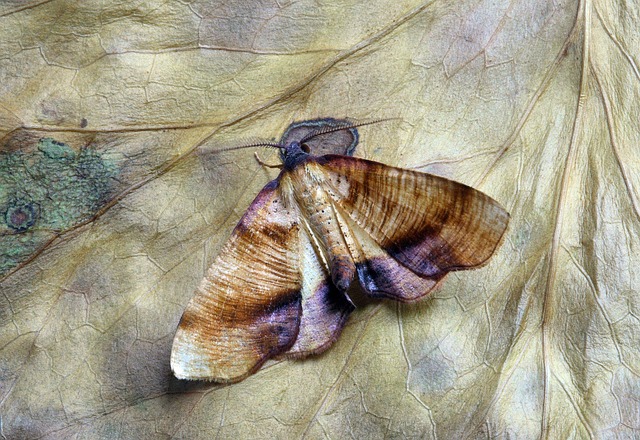Clothes moths are household pests that thrive in dark, humid spaces, causing fabric damage. Prevention includes regular cleaning, sealing entry points, and storing items in airtight containers. Professional moth extermination involves species identification, targeted treatments, pheromone traps, and preventative measures. Eco-friendly solutions include natural repellents like essential oils. Maintaining clean, well-ventilated areas disrupts moth lifecycles; regular inspections and discarding infested garments are crucial for professional moth extermination success.
“Unwanted guests in your closet? Clothes moths can quickly transform your wardrobe into a web of damage. This comprehensive guide offers expert advice on tackling these pesky invaders. We explore their behavior, from preferred habitats to feeding patterns, to empower you with knowledge. Learn about professional moth extermination methods that offer effective solutions. Discover natural repellents and preventative measures to create an unwelcoming environment for moths. Take control of your space and bid farewell to cloth damage.”
Understanding Clothes Moths: Their Behavior and Preferred Habitats
Clothes moths are a common household pest, known for feasting on fabrics and causing significant damage to clothing, curtains, and other textiles. Understanding their behavior is crucial in effective moth control. These pests are attracted to dark, quiet, and narrow spaces where their natural predators are scarce. They thrive in environments with high humidity levels and temperatures between 68-75°F (20-24°C). Their preference for undisturbed areas makes them adept at hiding in closets, attics, or under furniture, making professional moth extermination a necessary step for thorough removal.
The adult moths are excellent fliers and can quickly infest an entire home if left unchecked. They lay eggs on suitable surfaces, and the resulting larvae spin silken threads to move around and feed on fabrics. Identifying their preferred habitats allows homeowners to take proactive measures, such as regularly cleaning and airing affected areas, sealing entry points, and storing items in airtight containers, to prevent future infestations.
Professional Moth Extermination: Effective Methods and Strategies
Professional moth extermination requires a multi-pronged approach to effectively address and eliminate moth infestations in your home or wardrobe. One of the first steps is identifying the source and type of moths present, as different species have unique behaviors and preferences. Common household moths like the webbing moth and the carpet moth are attracted to certain fabrics, natural fibers, and materials with high protein content, such as wool, silk, and cotton. Once identified, professionals can employ targeted treatments specific to each moth variety.
Professional exterminators often utilize a combination of methods, including applying insecticides, using pheromone traps, and implementing preventative measures. Insecticides are carefully selected and applied in strategic locations to disrupt the moths’ life cycle. Pheromone traps mimic natural moth pheromones to attract and capture adult moths, disrupting their ability to mate and reproduce. Additionally, professionals might recommend sealing garments in airtight containers, regular cleaning and laundering of affected items, and storing clothes in moth-proof bags or boxes to break the infestation cycle and deter future moths from being attracted.
Natural Repellents and Preventative Measures to Keep Moths Away
Natural Repellents and Preventative Measures are effective ways to keep moths at bay, acting as a formidable defense against these fabric-devouring pests. Essential oils like lavender, tea tree, and eucalyptus possess potent scents that moths find repulsive. Spreading these oils around affected areas or using them in diffusers can create an inhospitable environment for moths. Another natural method involves introducing moth-repelling plants such as lavender, lemongrass, or citronella into your space—a beautiful and eco-friendly solution.
Professional moth extermination methods should be considered for severe infestations. Experts employ a range of techniques, from targeted treatments to full-scale decontamination, ensuring every egg, larva, and adult moth is eliminated. Regular cleaning, especially in areas prone to moisture build-up, is crucial. Moths are attracted to dark, quiet places with access to fabric, so maintaining a clean, well-ventilated space can significantly reduce the risk of an infestation.
Maintaining a Clean and Well-Ventilated Environment: A Comprehensive Guide
Maintaining a clean and well-ventilated environment is a crucial step in professional moth extermination. Regular cleaning routines, such as vacuuming floors, walls, and textiles, help remove moth attractants like fibers, dust, and dead skin cells. Focus on areas where moths tend to congregate, including dark corners, closets, and storage spaces. Ensure proper ventilation by opening windows during the day and using fans to circulate air, especially in humid environments where moths thrive.
A well-maintained space disrupts moth lifecycles and prevents their return. Using natural deterrents like lavender, cedar, or lemongrass can also be effective as they emit odors that repel moths. Regularly inspecting items stored for extended periods is essential; clean or discard infested garments to prevent the spread of moths and ensure a moth-free environment.
By implementing these expert strategies, from understanding clothes moth behavior to adopting natural repellents and maintaining a clean environment, you can effectively reduce attractants and prevent moth infestations. For severe cases, consider seeking professional moth extermination services for a thorough solution. With the right approach, you can protect your wardrobe and home from these pests, ensuring a quieter, moth-free future.
